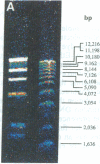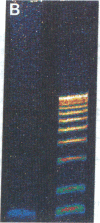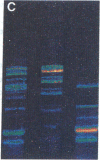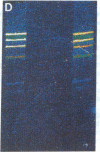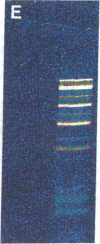Abstract
The complex between double-stranded DNA and ethidium homodimer (5,5'-diazadecamethylene)bis(3,8-diamino-6-phenylphenanthridini um) cation, formed at a ratio of 1 homodimer per 4 or 5 base pairs, is stable in agarose gels under the usual conditions for electrophoresis. This unusual stability allows formation of the complex before electrophoresis and then separation and detection in the absence of background stain. Competition experiments between the preformed DNA-ethidium homodimer complex and a 50-fold molar excess of unlabeled DNA show that approximately one-third of the dye is retained within the original complex independent of the duration of the competition. However, dye-extraction experiments show that these are not covalent complexes. After electrophoretic separation, detection of bands containing 25 pg of DNA was readily achieved in 1-mm thick agarose gels with laser excitation at 488 nm and a scanning confocal fluorescence imaging system. The band intensity was linear with the amount of DNA applied from 0.2 to 1.0 ng per lane and with the number of kilobase pairs (kbp) per band within a lane. Analysis of an aliquot of a polymerase-chain-reaction mixture permitted ready detection of 80 pg of a 1.6-kbp amplified fragment. The use of the ethidium homodimer complex together with laser excitation for DNA detection on gels is at least two orders of magnitude more sensitive than conventional fluorescence-based procedures. The homodimer-DNA complex exemplifies a class of fluorescent probes where the intercalation of dye chromophores in DNA forms a stable, highly fluorescent ensemble.
Full text
PDF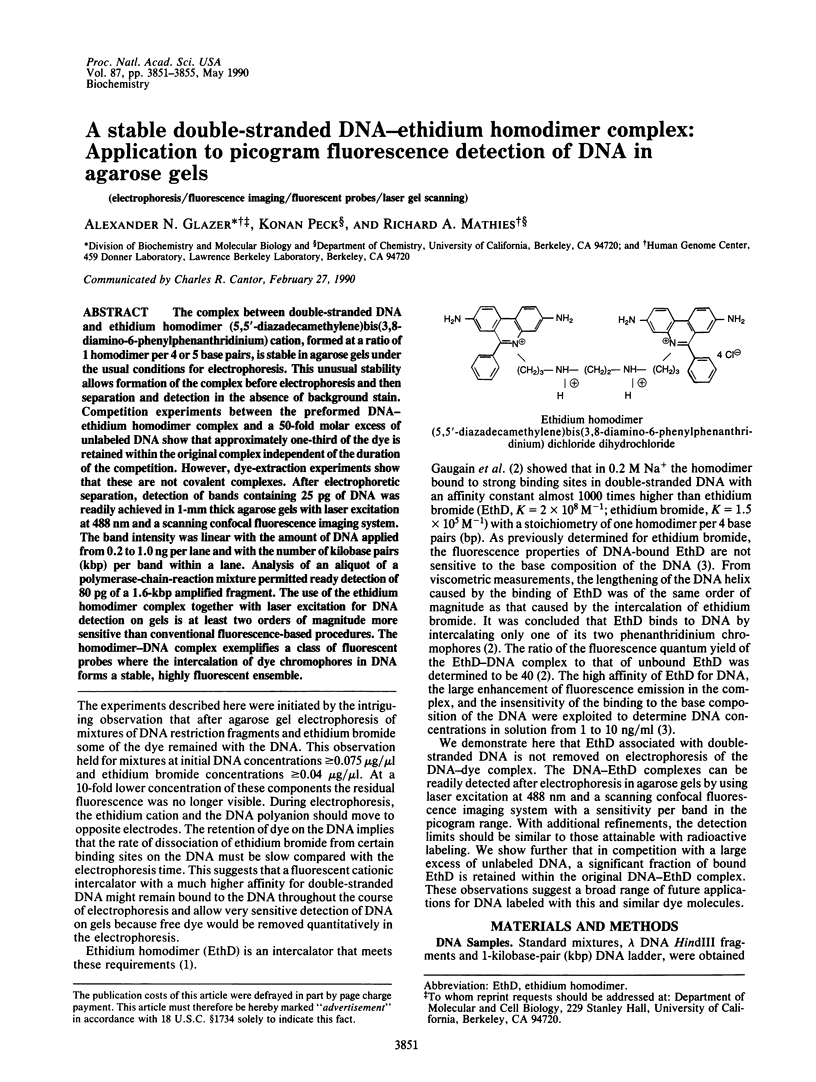
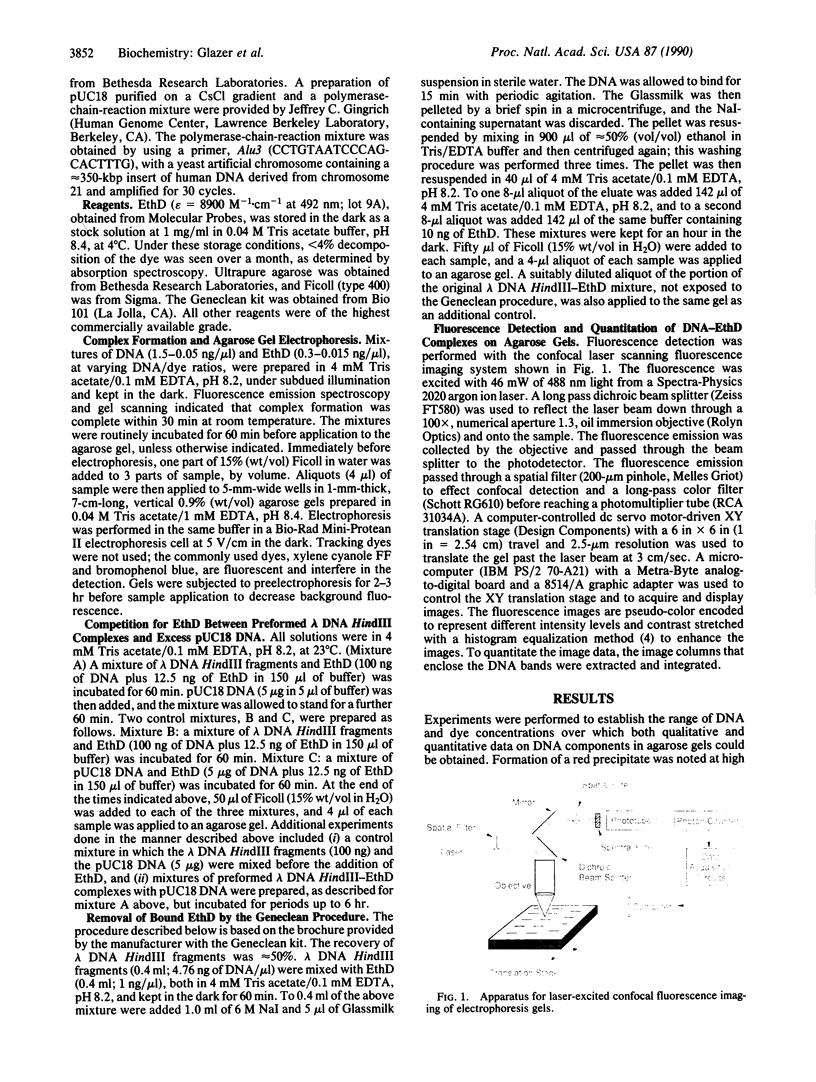
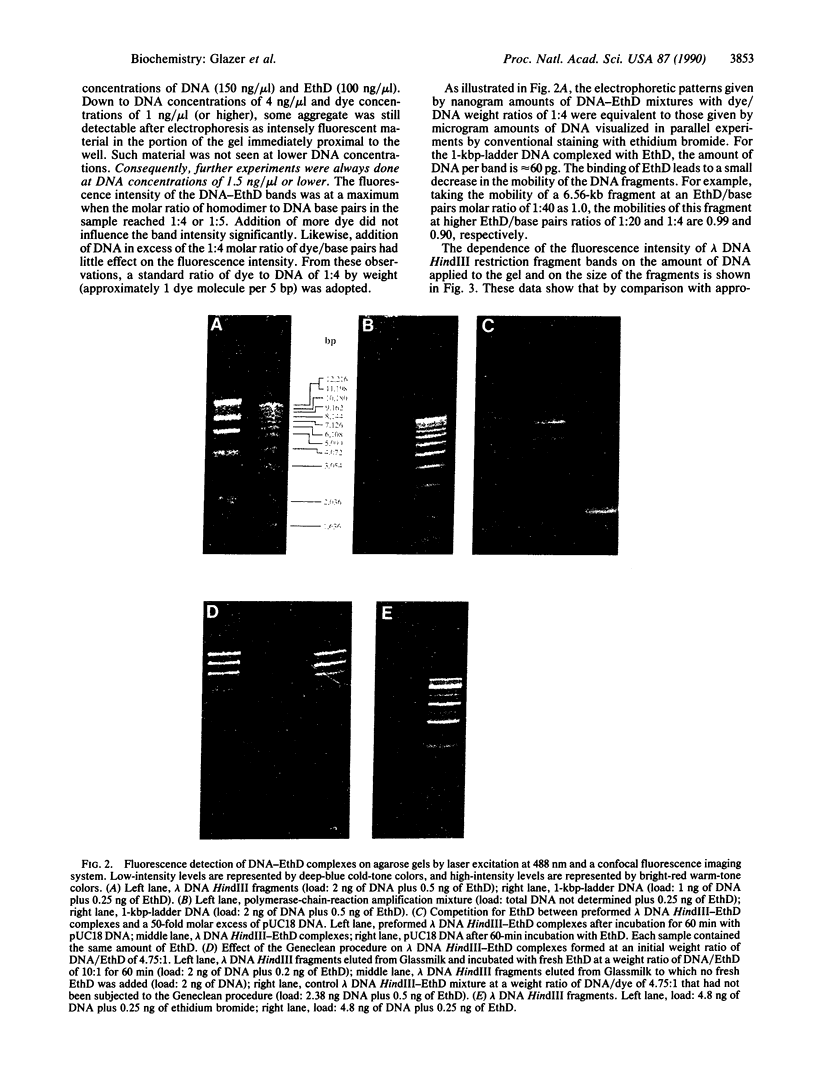
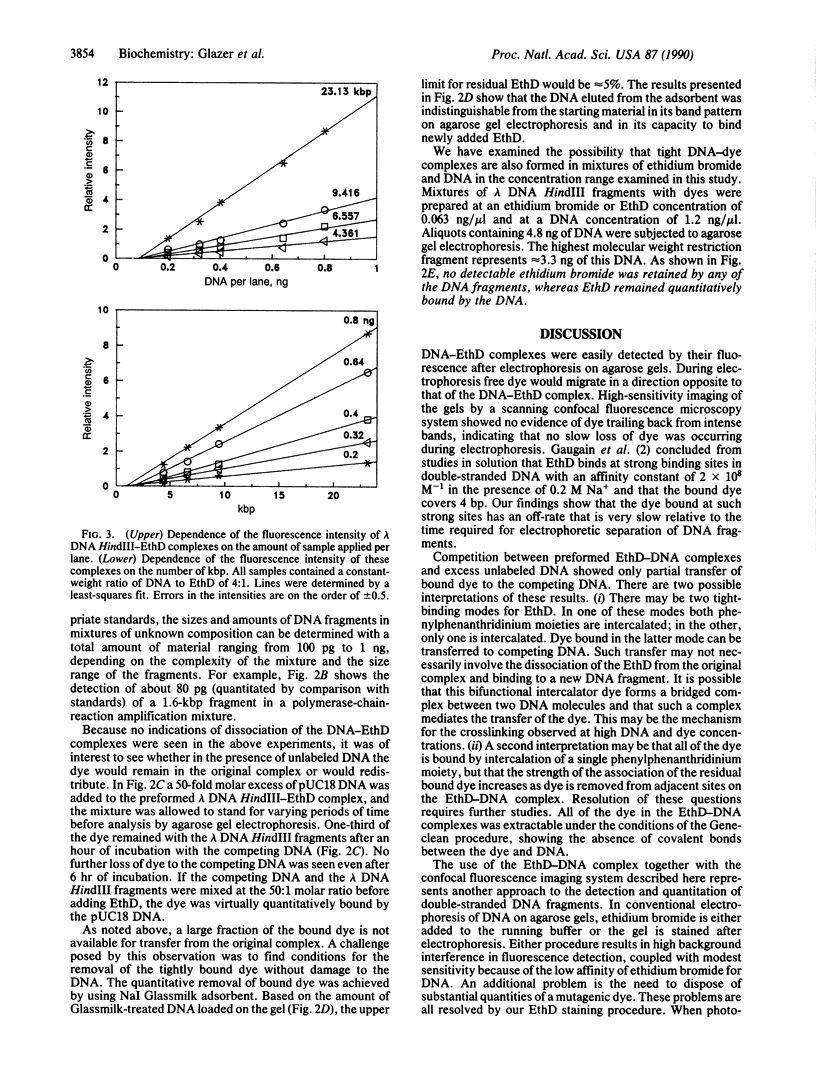
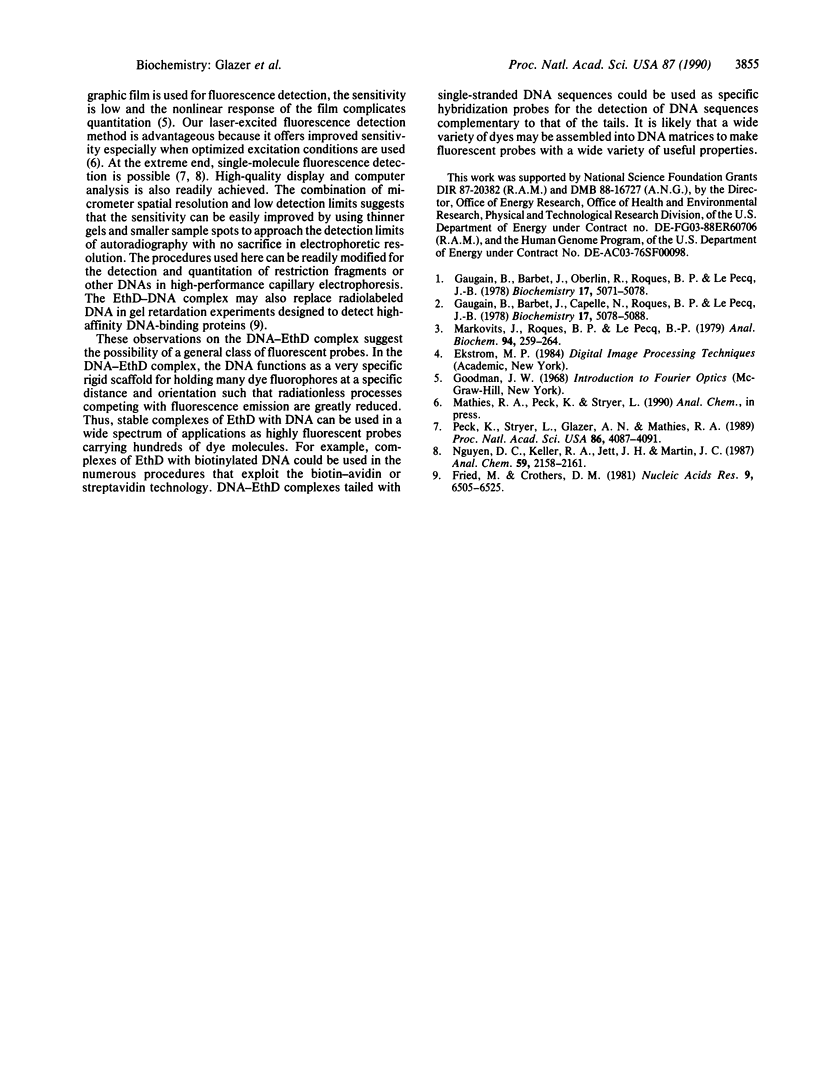
Images in this article
Selected References
These references are in PubMed. This may not be the complete list of references from this article.
- Fried M., Crothers D. M. Equilibria and kinetics of lac repressor-operator interactions by polyacrylamide gel electrophoresis. Nucleic Acids Res. 1981 Dec 11;9(23):6505–6525. doi: 10.1093/nar/9.23.6505. [DOI] [PMC free article] [PubMed] [Google Scholar]
- Gaugain B., Barbet J., Capelle N., Roques B. P., Le Pecq J. B. DNA Bifunctional intercalators. 2. Fluorescence properties and DNA binding interaction of an ethidium homodimer and an acridine ethidium heterodimer. Biochemistry. 1978 Nov 28;17(24):5078–5088. doi: 10.1021/bi00617a002. [DOI] [PubMed] [Google Scholar]
- Gaugain B., Barbet J., Oberlin R., Roques B. P., Le Pecq J. B. DNA bifunctional intercalators. I. Synthesis and conformational properties of an ethidium homodimer and of an acridine ethidium heterodimer. Biochemistry. 1978 Nov 28;17(24):5071–5078. doi: 10.1021/bi00617a001. [DOI] [PubMed] [Google Scholar]
- Markovits J., Roques B. P., Le Pecq J. B. Ethidium dimer: a new reagent for the fluorimetric determination of nucleic acids. Anal Biochem. 1979 Apr 15;94(2):259–264. doi: 10.1016/0003-2697(79)90357-9. [DOI] [PubMed] [Google Scholar]
- Peck K., Stryer L., Glazer A. N., Mathies R. A. Single-molecule fluorescence detection: autocorrelation criterion and experimental realization with phycoerythrin. Proc Natl Acad Sci U S A. 1989 Jun;86(11):4087–4091. doi: 10.1073/pnas.86.11.4087. [DOI] [PMC free article] [PubMed] [Google Scholar]




